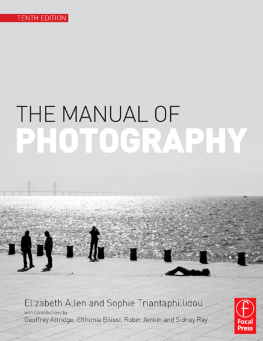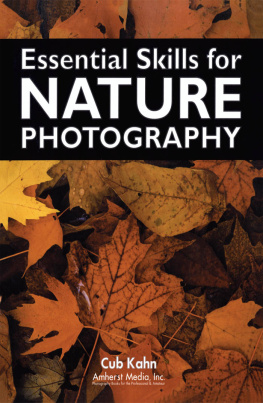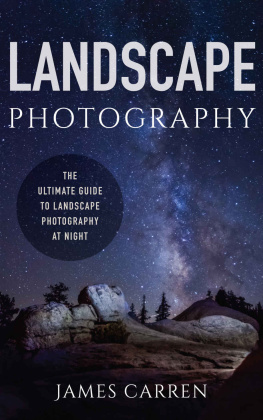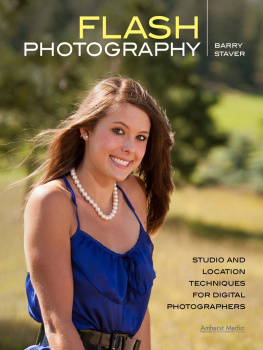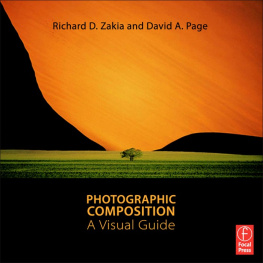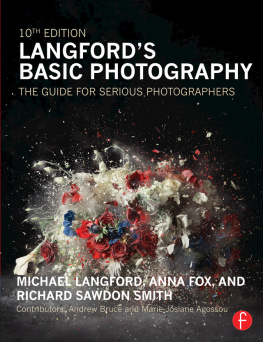location

second edition
mark galer
location photography
This Page Intentionally Left Blank
Essential Skills
location photography
second edition
mark galer
Focal
Press
OXFORD AMSTERDAM BOSTON LONDON NEW YORK PARIS SAN DIEGO SAN FRANCISCO SINGAPORE SYDNEY TOKYO
Focal Press
An imprint of Elsevier Science
Linacre House, Jordan Hill, Oxford 0X2 8DP
225 Wildwood Avenue, Woburn MA 01801-2041
First published 1999 Reprinted 2000 Second edition 2002
Copyright 1999, 2002, Mark Galer. All rights reserved
The right of Mark Galer to be identified as the author of this work has been asserted in accordance with the Copyright, Designs and Patents Act 1988
No part of this publication may be reproduced in any material form (including photocopying or storing in any medium by electronic means and whether or not transiently or incidentally to some other use of this publication) without the written permission of the copyright holder except in accordance with the provisions of the Copyright, Designs and Patents Act 1988 or under the terms of a licence issued by the Copyright Licensing Agency Ltd, 90 Tottenham Court Road, London, England W1T 4LP. Applications for the copyright holders written permission to reproduce any part of this publication should be addressed to the publisher
British Library Cataloguing in Publication Data
A catalogue record for this book is available from the British Library
Library of Congress Cataloguing in Publication Data
A catalogue record for this book is available from the Library of Congress ISBN 0 240 51669 9
For information on all Focal Press publications visit our website at: www .focalpress.com
Printed and bound in Italy
Acknowledgements
Among the many people who helped make this book possible, I wish to express my gratitude to the following individuals:
Professor Robin Williams and Michael Wennrich for their strong support for the project. Sandra Irvine, John Child and Dorothy Connop for advice and input to the final copy. The students of RMIT University and Photography Studies College, Melbourne, for their illustrative input and friendship.
Above all I am eternally grateful for the love, support and understanding of my wife Dorothy and for our two children Matthew and Teagan.
Picture Credits
Cover images: Mark Galer and Matthew Orchard.
Kata Bayer; John Blakemore; Sabina Bukowski; Mackenzie Charlton; Michael Davies; Lucas Dawson; Michael Denovan; Frederick Evans (Heritage-Images/RPS); Walker Evans (Library of Congress, Prints & Photographs Division, FSA/OWI Collection); Frank Falcone; Henry Fox Talbot (National Museum of Photography, Film and Television/ Science and Society Picture Library); Alan Fredes; Martina Gemmola; Wil Gleeson; Andrew Goldie; Shaun Guest; Liam Handasyde; Orien Harvey; Wil Hennesy; Roly Imhoff; Sarah Irawatty; MiAe Jeong; Itti Karuson; Sean Killen; Dorothea Lange (Library of Congress, Prints & Photographs Division, FSA/OWI Collection); David Lew; Jana Liebenstein; Kate Mills; Michael Mullan; Angela Nichols; Kim Noakes; Matthew Orchard; Ann Ouchterlony; Martin Parr (Magnum Photos Ltd); Benedikt Partenheimer; Hugh Peachey; Tim Roberts; Stephen Rooke; Lee Rosperich; Anthony Secatore; Dianna Snape; Paul Strand (Aperture Foundation Inc., Paul Strand Archive); Charlie Sublet; Jonathon Tabensky; Kate Tan; Alison Ward; Michael Wennrich; David Williams; Ben Wood; Catherine Yap; Alexandra Yourn.
All other pictures and illustrations by the author.
Contents
This Page Intentionally Left Blank
Introduction
Location photography covers a wide range of disciplines. From the captured image of a fleeting moment using existing light to the highly structured and preconceived advertising image using introduced lighting. This book is intended for students of photography working on location using primarily the existing light source. The information, activities and assignments provide the essential techniques for creative and competent location photography. The subject guides offer a comprehensive and highly structured learning approach, giving support and guidance to both staff and students. Basic theoretical information is included along with practical advice gathered from numerous professional photographers. An emphasis on useful (essential) practical advice maximises the
opportunities for creative photography.

Acquisition of technique
The first half of the book concentrates on the acquisition of skills necessary for location photography. Emphasis is placed on image design, communication of content and the essential techniques required for competent and consistent image capture and creation. The book builds student competence to make correct exposures under difficult lighting conditions. The practical problems of contrast are discussed and additional lighting in the form of flash is introduced. Terminology is kept as simple as possible using only those terms in common usage by practising professionals.
Application of technique
The second half of the book is devoted to the practical application of student skills. A historical context is given for two of the major areas of location work (photo-essay and landscape). The difference between capturing and creating images is discussed along with the appropriate application of each commercial working style. Assignments are undertaken in each of the three areas allowing students to express themselves and their ideas through the appropriate application of design and technique.
Introduction to teachers
This book is intended as an introduction to location photography for full-time students of photography and/or design. The emphasis has been placed upon a practical approach to the subject and the application of the essential skills. The activities and assignments cover a broad range of skills but avoid the need for the students to use large amounts of expensive equipment on location.
A structured learning approach
The photographic study guides contained in this book offer a structured learning approach that will give students a framework for working on photographic assignments and the essential skills for personal communication.
The study guides are intended as an independent learning resource to help build design skills, including the ability to research, plan and execute work in a systematic manner. The students are encouraged to adopt a thematic approach, recording all research and activities in the form of a visual diary.
Flexibility and motivation
The study guides contain a degree of flexibility often giving students the choice of subject matter. This allows the student to pursue individual interests whilst still directing their work towards answering specific criteria. This approach gives the student maximum opportunity to develop self-motivation. It is envisaged that staff will introduce each assignment and negotiate the suitability of subject matter with the students. Individual student progress should be monitored through group meetings and personal tutorials. Students should be encouraged to demonstrate the skills which they have learnt in preceding study guides whenever appropriate.
Implementation of the curriculum
For students studying photography full time the complete curriculum contained in this book would cover the first semester of the first year. If the curriculum contained in this book is combined with Studio photography and Digital Imaging (also available in the series) this would constitute the majority of the first-year practical curriculum.
Next page

